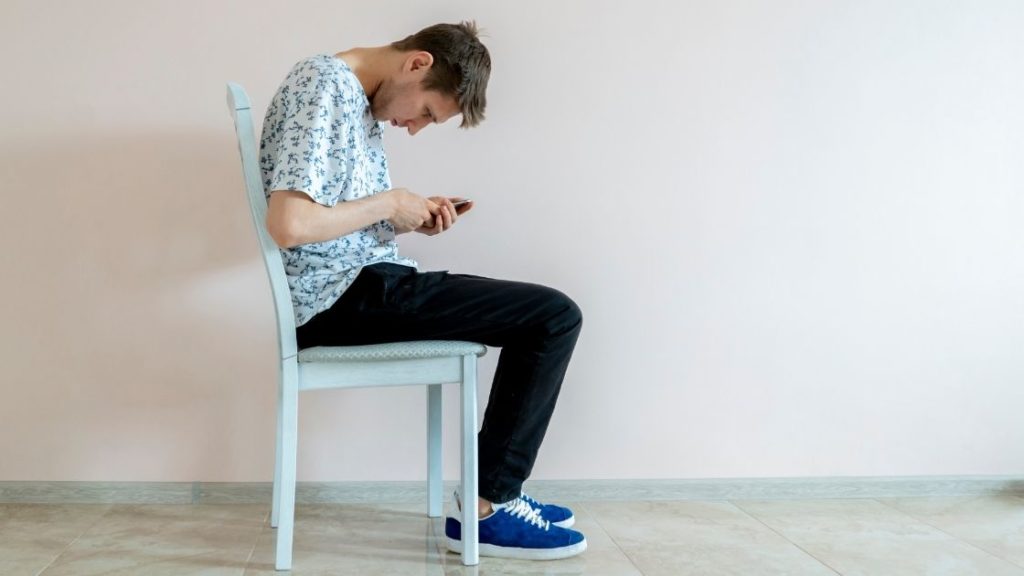Is Posture Important?

How Can Posture Cause My Pain and Stiffness?
As we sit for long periods of time, some of our muscles fatigue and cause us to slouch. This slouching posture then creates problems due to over stretching of certain muscles and shortening of others. These changes can lead to one or both conditions called, upper cross syndrome and lower cross syndrome. These conditions are extremely common and are often addressed in posture related symptoms.
Upper & Lower Cross Syndromes
In basic terms, upper cross syndrome can be visualized with an ‘X’ placed over someone’s side profile while they sit with the intersection at the neck. One line of the ‘X’ travels through the upper neck muscles and pectoralis muscles. These muscles are often found to be tight and exaggerate the forward head posture and rounded shoulders. The other line passes through the muscles in between the shoulder blades and the front of the neck. These muscles are often weak and need to be strengthened in order to help restore a more upright posture.
With lower cross syndrome, we can visualize another ‘X’ placed over the hip. One line of the ‘X’ passes through the muscles of the low back to the hip flexors. These muscles are the tight and shortened muscles caused from sitting for long periods of time. The other line crosses the abdominal and glute muscles. These muscles are often weak in lower cross syndrome and have to be strengthened to restore normal posture of the low back.
Tissue Changes Due to Posture
As mentioned earlier, our muscles and ligaments undergo changes as we sit for long periods of time. These changes occur through two processes known as creep and hysteresis. These processes describe how elastic materials deform under constant load. The changes in our tissues occur in about 20-30 minutes when we sit and generally take about 1-2 hours to return to their normal length. During this return time the ligaments are longer than they should be and predispose us to injury. Another interesting fact to take into account is there is more pressure on the discs in the low back in any seated posture compared to standing. However, some of the pressure can be mitigated when sitting in good posture with the normal curve of the low back and when sitting in a chair with sufficient back support.
How Can We Help at Moyer Total Wellness?
At Moyer Total Wellness, we use a research based, 4-Step Approach to the conservative treatment of musculoskeletal conditions that involve:
- Removing knots from muscles
- Lengthening tight tissues
- Mobilizing joints
- Strengthening weak muscles
Whether you see a massage therapist, acupuncturist or chiropractor, we all use the same approach to care. However, we recommend starting with a chiropractor first, in order to get the correct diagnosis, figure out which tissues are responsible for the pain symptoms and receive the right treatment plan. Treatment with Dr. Dange Wolf, DC would involve lengthening the shortened muscles through various soft tissue techniques, teaching specific exercises and stretches to address the soft tissue problems and chiropractic adjustments may also be delivered in order to restore normal joint motion.
What Can Be Done Outside of The Office?
There are numerous strategies people can take to help alleviate the postural stresses they experience. Most of which involve taking breaks, setting up one’s workspace in a more ergonomic way, and performing specific exercises and stretches to address the common patterns involved with upper and lower cross syndromes. A huge part of taking breaks every 15-20 minutes includes performing a specific exercise. This exercise is called Brugger’s exercise and helps to address the negative impacts of prolonged sitting. This exercise is done by following these simple steps:
- Create space between you and your desk
- Sit at the edge of your seat with your feet just further apart than your hips, with your feet angled out
- Sit upright by pulling your shoulders back and down
- Tuck your chin back to bring your ears back over your shoulders
- Breathe with your stomach
- While keeping your arms against your side, rotate your arms back and squeeze your shoulder blades together
- Hold this position for 30-60 seconds
This is one simple technique among various others that can help our patients receive care outside the clinic. Following our new patient appointment where the chiropractor performs a detailed history and exam, they are able to provide specific exercises and strategies that address the individual patient’s needs.
Resources
Cailliet, R. (1977). Soft Tissue Pain and Disability (pp. 3-24, 41-104). F.A. Davis Company
Liebenson, C. (2007). Rehabilitation of the Spine: A practitioner’s manual (pp. 352-368). Lippincott William & Wilkins.
McKenzie, R. (1981). The Lumbar Spine: Mechanical diagnosis and therapy (pp. 4-8, 15-36, 81-93). Spinal Publications.
Vizniak, N. (2015). Spinal Manual: Quick reference evidence informed (pp. 328). Professional Health Systems Inc.
Photo Credit
Canva by mihailrudenko
